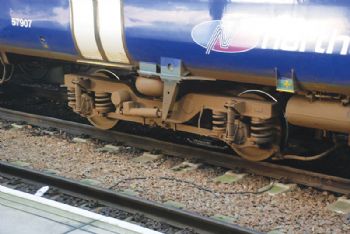
Research at the University of Huddersfield (
www.hud.ac.uk) could lead to new generations of railway vehicles with carbon-fibre frames and key components made using the latest 3-D printing technology.
The investigation of novel materials and manufacturing processes is being carried out by the university’s Institute for Railway Research, which has been awarded funding of almost £300,000 as part of an EU-backed project to develop lighter, more reliable, more comfortable and quieter rolling stock.
IRR director Simon Iwnicki said: “We hope that the result will be a step change in the running gear of rail vehicles. The aim is to explore the potential — and any shortcomings — of new materials.
“The benefits would include a reduction in the weight of bogies, simpler designs and reduced life-cycle costs.”
Run2Rail is the overall title of the new project, and it is an element of the EU’s multi-faceted Shift2Rail programme, which is designed to foster research and innovation in European railways.
The total funding allotted to Run2Rail is 2,732,000 euros, and it has four work packages, shared by leading engineering companies and universities throughout Europe.
The Huddersfield Institute is participating in three of the packages, and it is the lead institution for the project to investigate optimised materials for running gear.
Professor Iwnicki said it was the IRR’s expert knowledge of the design of railway bogies and their dynamic behaviour that was being harnessed for the work package.
At an initial meeting in Milan with the partners, it was decided to investigate the use of carbon-fibre composites, which would enable bogie frames to be constructed by robots, layer by layer.
“You can have any number of curves or shapes and therefore build up the shape you actually want, whereas with a steel frame there are only a certain number of shapes you can make,” said Professor Iwnicki.
"Also, carbon fibre is much lighter [than steel], and you can put the material just where you want it, which makes an assembly lighter still.”
Another strand of investigation will be the use of additive manufacturing — or 3-D printing — using lasers and steel powders. This technology is becoming more mature, and components such as axle boxes and brackets for brakes are now ‘candidates’ for this process.
The Run2Rail project is now under way; it is due to be completed by August 2019.